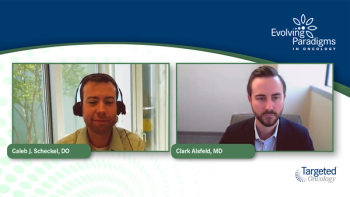
Real-World Experience with Ruxolitinib in SR cGvHD
A panelist discusses how real-world experience with ruxolitinib and belumosidil shows similar response rates to clinical trials (45% and 65% respectively), emphasizes the importance of antimicrobial prophylaxis and supportive care, and describes gradual steroid tapering strategies once patients achieve responses.
Treatment Selection and Real-World Performance of GVHD Therapies
With four FDA-approved agents available for steroid-refractory chronic GVHD, physicians must consider patient-specific factors and disease manifestations when selecting treatments. For skin and joint/fascia involvement (seen in 60-80% of patients), all agents show similar efficacy (30-35% response rates), so selection often depends on side effect profiles. For patients with cytopenias, ruxolitinib is often avoided, while those with rapidly progressive disease may benefit from ruxolitinib's quicker response time. Belumosidil is preferred for patients with both fibrotic and inflammatory manifestations, particularly with baseline cytopenias.
For lung GVHD (bronchiolitis obliterans), patients typically receive inhaled therapy with fluticasone, azithromycin, and montelukast (FAM therapy), but systemic options include axatilimab (0.3mg/kg every two weeks) or belumosidil based on higher objective response rates. In non-Hodgkin's lymphoma or CLL transplant patients with inflammatory GVHD manifestations, ibrutinib may be preferred for its anti-lymphoma activity, though close monitoring for cardiac complications, bleeding, and infections is essential, particularly in older patients.
Real-world retrospective studies of approximately 60 patients treated with ruxolitinib post-approval showed response rates of around 45%, similar to the clinical trial findings of 50%. Management strategies include transfusions and growth factor support for cytopenias, along with comprehensive antimicrobial prophylaxis (PenVK twice daily for antibacterial, acyclovir for zoster, and posaconazole for antifungal coverage with therapeutic monitoring). Supportive care including IVIG supplementation for hypogammaglobulinemia, vaccinations following ASTCT guidelines, and comprehensive rehabilitation with physical therapy, occupational therapy, and psychological support are essential components of treatment.








































